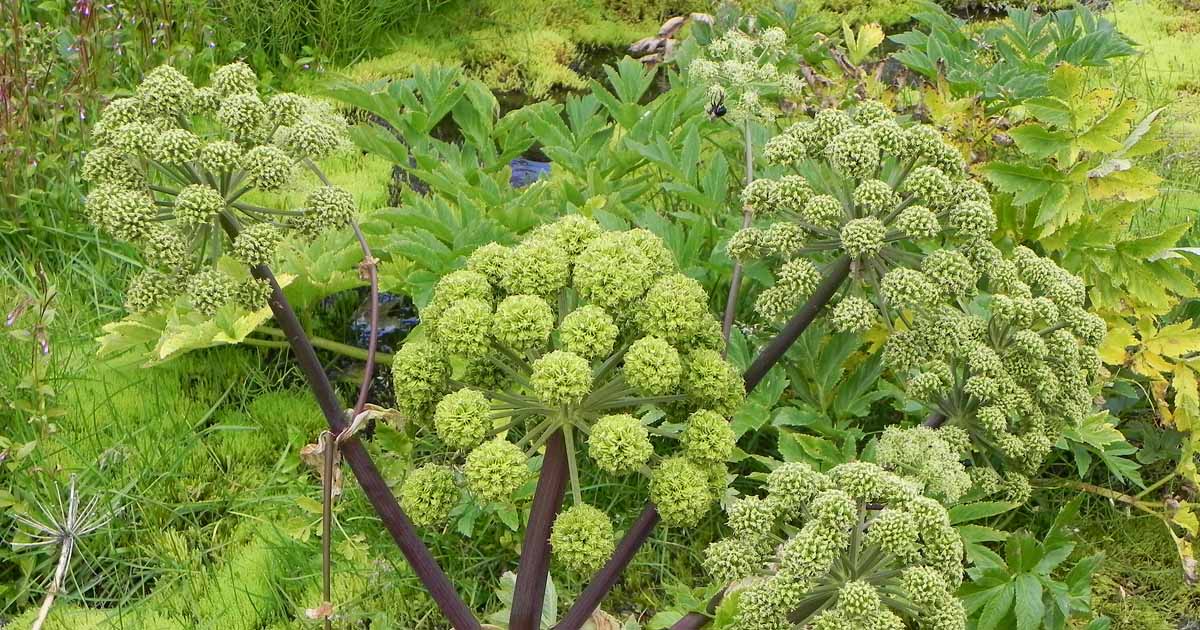How To Grow And Care For A Angelica Plant
Are you looking for a unique and beautiful addition to your herb garden? Look no further than Angelica - a stunning plant known for its striking flowers and delicious scent. In this article, we will provide you with all the information you need to successfully grow and care for Angelica in your herb garden.

Plant Attributes
Angelica is a biennial herb that can grow up to 6 feet tall. Its leaves are large and divided into three parts, with the edges that resemble the teeth of a saw. The flowers bloom in the second year of growth, forming large umbels of color that can be white, green, or pink. The plant is known for its strong and sweet fragrance, which is why it is often used in perfumes and soaps.
Plant Care
Angelica requires a spot with full sun to partial shade, and fertile, moist, and well-drained soil. The plant prefers a cooler climate with temperatures ranging from 60 to 70 degrees Fahrenheit. It is essential to water the plant regularly during dry periods, but be careful not to overwater it, as excessive moisture can lead to root rot.
As a biennial plant, Angelica requires a few years to complete its life cycle. In the first year of growth, it will produce a rosette of leaves, and in the second year, it will bloom and produce seeds. After that, it will die off. To ensure Angelica returns every year, allow some of the plants to go to seed, and the seeds to drop in the soil.
Pruning
Pruning is essential for Angelica as it can become quite large and require support. Trim its stems to prevent them from falling over and breaking. You may need to stake the stems to prevent them from leaning too hard.
Propagation
You can propagate Angelica using its seeds. Sow the seeds outdoors in the late summer or early fall, or indoors during the winter. The plant requires a period of cold to germinate, so sow them in a refrigerated area or a cold frame before transplanting outside in the spring.
Potting & Repotting
Angelica grows best in the ground due to its large size and extensive root system. However, you can grow it in a large pot if needed. Ensure the pot is at least 12 inches deep and wide to accommodate the plant's root system. Choose a potting mix that is rich in organic matter, and ensure the container has drainage holes at the bottom.
Common Pests & Plant Disease
Angelica is generally pest-resistant but can be affected by aphids and spider mites. If you notice any infestation, wash the plant with a gentle stream of water or treat it with insecticide. To prevent fungal diseases, avoid overhead watering and provide sufficient air circulation around the plant.
Common Problems
The most common problem with growing Angelica is that it can be invasive in certain areas. Its seeds can spread easily and grow into new plants, so if you do not want Angelica to take over your garden, ensure you monitor it carefully and remove any unwanted seedlings promptly.
In conclusion, Angelica is a stunning herb that can add beauty and fragrance to any garden. With proper care and attention, you can grow Angelica successfully and enjoy its many benefits. So, why not add this unique plant to your garden today?



Post a Comment for "How To Grow And Care For A Angelica Plant"